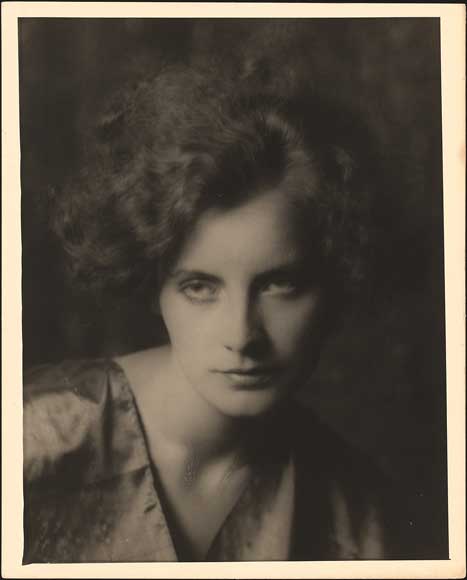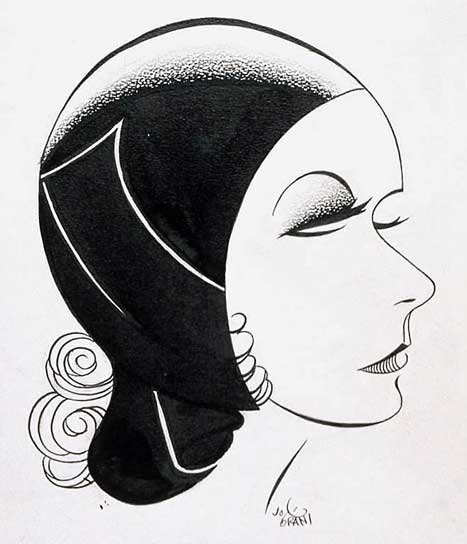Greta Garbo: Legend of Hollywood's Golden Age

The enigma and allure of Greta Garbo (1905–1990) was something she understood completely: “I am only an image, and that is all I can be to you.” The aura of Garbo’s star quality still radiates: “glamorous,” “mysterious,” “aloof,” and “enchanting” were words commonly used to describe her. And although she retired from movies more than six decades ago, at the age of thirty-six, Garbo remains a legend from Hollywood’s golden age.
Born Greta Gustafsson in Stockholm on September 18, 1905, the stagestruck adolescent won a scholarship to study at the city’s Royal Dramatic Theatre School. Here she met Sweden’s leading film director, Maurtiz Stiller, who became her mentor: first, he changed her name to “Greta Garbo,” and then, when MGM studio chief Louis B. Mayer offered him a contract to come to Hollywood, he brought his protégé along. Garbo and Stiller arrived in New York in 1925 and were introduced to photographer Arnold Genthe. Fascinated by Garbo’s eyes and by “what is behind that extraordinary forehead,” Genthe persuaded her to sit for a photo session that transformed her career. The results of this sitting (above), soon published in Vanity Fair magazine, convinced MGM that Garbo had a very special quality, and she was quickly signed to a contract.
Still only twenty, Garbo had a bit more baby fat than fit the MGM mold, teeth that needed straightening, and a mop of hair that was entirely too frizzy. The studio glamour doctors went to work, and her metamorphosis yielded results. In 1926 Garbo made an auspicious Hollywood debut in The Torrent, and the next year played opposite John Gilbert—then one of the screen’s most popular leading men—in what became a tremendous box-office hit, Flesh and the Devil. Their chemistry sizzled both on and off the set, and they would be paired in several other films, including Love (1927), A Woman of Affairs (1928), and Queen Christina (1933).
As the Los Angeles Times noted at the time, Garbo represented an “utterly different type” of movie star. Earlier stars such as Mary Pickford or Lillian Gish conveyed innocence; Colleen Moore and Gloria Swanson were prototypic Jazz Age flappers; Clara Bow had “It.” But all seemed dull and dated when the screen filled with Garbo’s lambent aloofness and sophistication. Her evanescent movie image was enhanced by the art of still photography, particularly the 4,000 photographs taken between 1929 and 1941 by MGM’s chief photographer, Clarence Sinclair Bull (his 1939 portrait of Garbo shown at right).
Theirs was a wonderfully simpatico relationship: “When the pose was to my liking,” Bull recalled, “I quickly adjusted the lights and made the picture. Garbo read my face out of the corner of her eye. . . . All I did was light the face and wait. And watch. [She was] the easiest of all stars to photograph, having no bad side and no bad angles. . . . She never seemed to tire of posing.” James Wong Howe, a leading MGM cinematographer, agreed with Bull on the ease of working with Garbo: “She was like a horse on the track—nothing, and then the bell goes, and something happens. When the camera started to roll, she started to come to life.” Fellow movie star Bette Davis described the Garbo magic as instinctive: “her mastery over the machine was pure witchcraft. . . . No one else\ so effectively worked in front of a camera.”
However masterful she appeared onscreen, however much she enjoyed the public face of her stardom—and there are indications that she did—the obsession of her personal life was solitude. Garbo the Star loved being worshiped on the silver screen and was said to be “crazy about pictures of herself.” Yet the increasingly private Garbo resented the fame she had worked so carefully to cultivate: “The story of my life,” she once said, “is about back entrances and side doors and secret elevators . . . so that people won’t bother you.”
MGM was not above using Garbo’s eccentricities for publicity: when she made her transition from silent to sound films in Anna Christie (1930), MGM trumpeted “Garbo Talks!”; in Ninotchka (1939), the marquees headlined “Garbo Laughs!” Among her movies in the thirties was Grand Hotel, which won the Best Picture Oscar in 1932; Anna Karenina, for which the New York Times called her the “first lady of the screen” in 1935;and Camille, where critics hailed “the sheer magic of her acting” in 1937. After the “cinematic champagne” and “sparkling satire” of Ninotchka, her final film was the 1941 disaster Two-Faced Woman, which was not only panned by critics but condemned by the National Legion of Decency for “impudently suggestive scenes, dialogue and situations; suggestive costumes.”
And what about that most-famous-of-all-Garboisms? She insisted that she never said “I want to be alone,” only that “I want to be left alone.” Perhaps the great irony of her life was that by trying to avoid publicity, she became one of the most publicized women in the world.
- Amy Henderson, Historian, National Portrait Gallery
